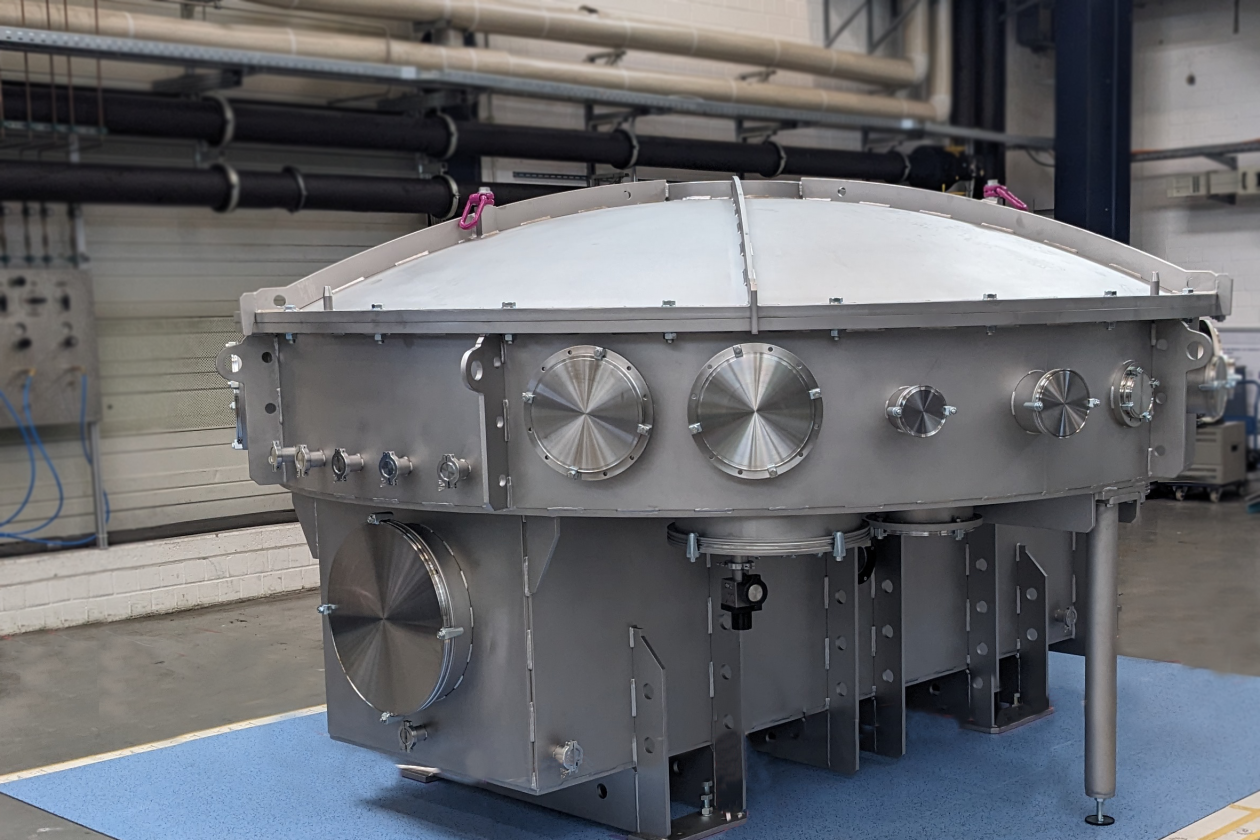
Hannover, Germany -- In order to peer deep into the cosmos, telescopes employ large optics. Scientists at LZH (Laser Zentrum Hannover) are developing a method to coat these meter-sized optics, and now have procured a new specialized facility for this purpose.
In astronomical research, the size of the optic is a crucial factor when it comes to the resolution and range of telescopes. Current telescopes, such as the Extremely Large Telescope (ELT) under construction in Chile, use very large primary mirrors (approximately 39 meters in diameter) to gather as much light as possible and deliver high resolution.
With such a large primary optic, the optics of measuring instruments and detectors must also be proportionally adapted and provided with a complex coating. Scientists at LZH are researching a process for this with a new specialized facility.
Ion Beam Sputtering (IBS)
Currently, there is no implementation of an Ion Beam Sputtering (IBS) coating process available that can produce filter coatings on optics several meters in diameter for astronomical instruments. LZH scientists aim to change that by developing a novel IBS process for these optics.
Ion Beam Sputtering is a physical deposition process used to create thin layers of the highest optical precision and quality. For this purpose, they have collaborated with their spin-off Cutting Edge Coatings GmbH from Hannover to develop a facility that was delivered to LZH in early November 2023. The coating chamber, with an internal diameter of 3 meters, will be ready for initial experiments by mid-2024.
The project "Development of an Ion Beam Sputtering Process for 2 Meter Optics in Astronomy" - RI 645/10-1 is funded by the German Research Foundation (Deutsche Forschungsgemeinschaft e.V.).







